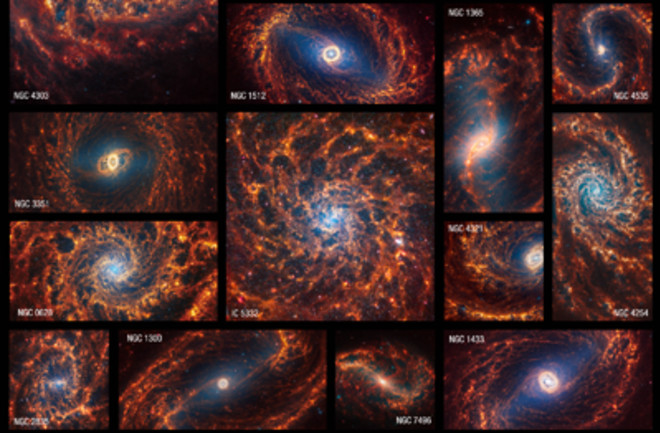The James Webb Space Telescope (JWST) has captured 19 nearby spiral galaxies in a different light. The images revealed intricate details of each galaxy’s spiral arms, pockets of star clusters, and lacy, carved-out filaments of gas in the interstellar material. Webb’s NIRCam and MIRI instruments captured the glowing gas and points of light.
“Webb’s new images are extraordinary,” said Janice Lee, a project scientist at the Space Telescope Science Institute, in a statement. “They’re mind-blowing even for researchers who have studied these same galaxies for decades. Bubbles and filaments are resolved down to the smallest scales ever observed and tell a story about the star formation cycle.” The study was published in The Astronomical Journal on December 29, 2023.
New James Webb Telescope Images Gather Dust
Aside from capturing a stunning new view of neighboring galaxies, a team of researchers at Ohio State used the images to study how galaxies may distribute their gas and dust. They found that the shape and width of gas stayed similar in the outer parts of galaxies, regardless of what the center looked like.
“Because this dust traces out the fuel for future generations of stars,” said Debosmita Pathak, study lead author and graduate student at Ohio State, in a statement. “The similarity we see among galaxies hints that some aspects of star and planet formation may be universal across galaxies.”

